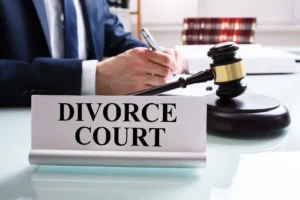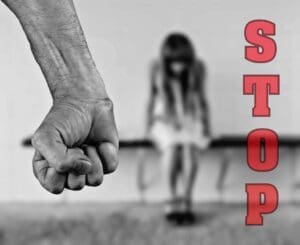Transitional Justice: Key Legal Insights for Change
Transitional justice, as a field and practice, occupies a unique space in the legal world-one that grapples with the aftermath of conflict, repression, or authoritarian rule and seeks a path toward peace, accountability, and societal restoration. The phrase transitional justice: key legal insights for change captures the heart of this endeavor. It is about more than prosecuting past wrongs; it is about designing a framework that balances justice with the practical realities of rebuilding fractured societies. In the contemporary legal landscape, the relevance of transitional justice is only growing, as nations and communities confront legacies of violence, division, and systemic abuse.
The roots of transitional justice lie in the recognition that standard legal mechanisms are often insufficient to address the magnitude and complexity of mass atrocities or systemic violations. Traditional criminal justice systems may lack the capacity, legitimacy, or public trust to deliver credible outcomes in the wake of conflict or dictatorship. Thus, transitional justice encompasses a spectrum of judicial and non-judicial measures-truth commissions, reparations, institutional reforms, and sometimes conditional amnesties-each designed to serve the dual imperatives of accountability and reconciliation.
A central legal insight is the tension between the demands for justice and the imperatives of peace. This tension is not merely theoretical; it plays out in the choices societies make about whether, how, and whom to prosecute. The legal framework governing transitional justice often requires a nuanced approach to amnesties. Blanket amnesties, which shield all perpetrators from accountability, are generally disfavored in international law because they undermine the rights of victims and the credibility of legal institutions. However, conditional amnesties-granted in exchange for truth-telling, disarmament, or reparations-may be tolerated if they serve a broader societal interest and are accompanied by meaningful accountability measures.
The International Criminal Court (ICC) and other international tribunals have become fixtures in the transitional justice landscape, offering a permanent mechanism for prosecuting the gravest offenses when domestic systems are unable or unwilling to act. Yet, the principle of complementarity ensures that national courts retain primary responsibility, provided they meet international standards of fairness and effectiveness. This balance between international oversight and national sovereignty is a recurring theme in transitional justice, reflecting the conservative legal principle that local institutions, if properly reformed, are best positioned to deliver justice that resonates within their own societies.
Key legal insights for change in transitional justice also extend to the design and implementation of truth commissions. These bodies are tasked not only with uncovering facts but also with facilitating public acknowledgment of wrongdoing and fostering a sense of collective memory. The legal authority of truth commissions varies, but their legitimacy hinges on transparency, inclusiveness, and the ability to provide victims with a platform to share their experiences. In many cases, the findings of truth commissions can inform subsequent prosecutions, reparations, and institutional reforms, creating a holistic approach to justice.
Reparations programs are another cornerstone of transitional justice, offering tangible recognition of harm and a means of redress for victims. The legal basis for reparations is grounded in both international human rights law and domestic statutes, but the effectiveness of these programs depends on political will, administrative capacity, and financial resources. Successful reparations efforts, as seen in countries like Argentina and Nepal, are often the result of persistent advocacy by victims’ groups and civil society, coupled with a legal framework that prioritizes accountability and transparency.
Institutional reform is perhaps the most forward-looking aspect of transitional justice. The process of vetting and restructuring state institutions-especially the judiciary, police, and military-aims to break cycles of abuse and restore public trust. Legal mechanisms for institutional reform may include the removal of individuals implicated in past abuses, the adoption of new codes of conduct, and the establishment of oversight bodies. These reforms are not merely technical; they are essential to ensuring that the rule of law is upheld and that future violations are prevented.
The role of civil society in transitional justice cannot be overstated. Grassroots organizations, victims’ associations, and advocacy groups often drive the process, holding governments accountable and ensuring that the voices of those most affected are heard. Their involvement lends legitimacy to transitional justice measures and helps to bridge the gap between legal frameworks and lived realities. In the Balkans, for example, civil society initiatives have played a crucial role in localizing transitional justice and adapting global principles to specific cultural and historical contexts.
Recent developments highlight both the promise and the challenges of transitional justice. In Nepal, the passage of a new transitional justice law marks a significant step forward, incorporating positive provisions for accountability and reparations. However, concerns remain about potential loopholes that could shield perpetrators from prosecution, underscoring the need for robust implementation and vigilant oversight. The experience of Nepal illustrates a broader lesson: legal reforms must be accompanied by genuine political commitment and engagement with victims and civil society to achieve lasting change.
Transitional justice is not a panacea. It operates in a world of imperfect choices, where the pursuit of justice can sometimes conflict with the goal of peace. The conservative legal tradition, with its emphasis on prudence, incremental change, and respect for established institutions, offers valuable guidance in navigating these dilemmas. Rather than seeking utopian solutions, transitional justice practitioners must work within the constraints of law and politics to craft responses that are both principled and practical.
The international legal order, particularly through instruments like the United Nations Charter and the Universal Declaration of Human Rights, provides a normative framework for transitional justice. These instruments enshrine the rights to truth, justice, reparations, and guarantees of non-recurrence. Yet, the application of these rights in specific contexts requires careful legal analysis and adaptation to local circumstances. The principle of self-determination, for instance, is central to the legitimacy of transitional justice processes, ensuring that affected communities have a meaningful say in the design and implementation of measures that affect their lives.
Digital technology and social media have introduced new dimensions to transitional justice. On one hand, they offer powerful tools for documentation, advocacy, and public engagement. On the other, they present challenges related to misinformation, hate speech, and the weaponization of narratives. The experience of the Rohingya genocide, where online platforms played a destructive role, underscores the need for robust legal mechanisms to regulate digital content and protect human rights in the digital age. Transitional justice must evolve to address these realities, incorporating digital governance and content moderation into its toolkit.
Education and the cultivation of legal expertise are vital for the sustainability of transitional justice. As the field matures, universities and professional associations are developing specialized courses and training programs to equip the next generation of lawyers, judges, and policymakers. The growth of transitional justice as an academic discipline reflects its increasing importance in global legal practice and its potential to shape the future of justice and governance.
The American experience with transitional justice, though less dramatic than in some post-conflict societies, offers important lessons. The legacy of slavery, segregation, and systemic discrimination continues to shape debates about reparations, institutional reform, and the role of law in addressing historical injustices. While the United States has not adopted a comprehensive transitional justice framework, ongoing efforts to confront the past-through truth-telling, memorialization, and targeted reforms-demonstrate the relevance of transitional justice principles in diverse contexts.
International cooperation is essential for the success of transitional justice. The complexity of mass atrocities and systemic abuses often transcends national borders, requiring coordinated responses from states, international organizations, and civil society. The principle of complementarity, enshrined in the Rome Statute of the ICC, embodies this spirit of cooperation, ensuring that international mechanisms support rather than supplant domestic efforts. Global cooperation also facilitates the sharing of best practices, technical expertise, and financial resources, enhancing the effectiveness and legitimacy of transitional justice initiatives.
Victim-centered approaches are increasingly recognized as best practice in transitional justice. Placing victims at the heart of the process ensures that their needs, perspectives, and rights are prioritized. This approach is reflected in the design of reparations programs, the operation of truth commissions, and the development of institutional reforms. It also aligns with the conservative legal principle that justice must be rooted in the lived experiences of those most affected by wrongdoing, rather than imposed from above.
Gender-responsive and inclusive practices are also gaining prominence in transitional justice. Recognizing the specific harms suffered by women, children, and marginalized groups is essential for delivering meaningful justice and fostering societal healing. Legal frameworks must be sensitive to these realities, incorporating measures to address sexual and gender-based violence, ensure equal participation, and promote non-discrimination.
The challenges facing transitional justice are formidable. Political resistance, resource constraints, and the persistence of impunity can undermine even the best-designed legal frameworks. Yet, the resilience and creativity of victims, civil society, and reform-minded officials offer grounds for optimism. The path to justice is rarely linear, but incremental progress, grounded in legal principles and guided by practical wisdom, can yield transformative results.
The afterlives of transitional justice-the ways in which its principles and practices endure and evolve over time-are a testament to its enduring relevance. In some cases, transitional justice processes have spurred broader movements for social and political change, inspiring new generations to pursue justice and accountability. In others, the legacies of transitional justice are contested, with ongoing debates about the adequacy of measures taken and the need for further reform. These dynamics underscore the importance of continuous engagement, reflection, and adaptation in the pursuit of justice.
In conclusion, transitional justice: key legal insights for change is not a static doctrine but a living practice, shaped by the interplay of law, politics, and society. Its success depends on the ability to balance competing imperatives, engage diverse stakeholders, and adapt to changing circumstances. The conservative legal tradition, with its emphasis on prudence, respect for institutions, and incremental reform, offers a valuable framework for navigating the complexities of transitional justice. By grounding transitional justice in legal principles and practical realities, societies can chart a path toward accountability, reconciliation, and lasting peace.
As transitional justice continues to evolve, legal professionals, policymakers, and civil society must remain vigilant, ensuring that the pursuit of justice does not become an end in itself but serves the broader goals of societal restoration and human dignity. The lessons of transitional justice-rooted in law, informed by experience, and animated by a commitment to truth and accountability-offer a blueprint for addressing the legacies of the past and building a more just and peaceful future.
Citations:
- Scholarly Article on Transitional Justice and Legal Frameworks
- PDF: International Legal Tools for Transitional Justice
- U.S. State Department Overview of Transitional Justice Initiatives
- OHCHR Story: Transitional Justice for Confronting the Past and Building the Future
- Amnesty International: Nepal’s New Transitional Justice Law Analysis
- Research Paper: Transitional Justice Mechanisms and Their Effectiveness
- ICTJ Research Brief: Development and Judicial Reform in Transitional Justice
- Academic Study on Transitional Justice Approaches
- Analysis of Transitional Justice in Post-Conflict Societies
- OHCHR Statement: Transitional Justice, Victims’ Dignity, and Healing
- Scholarly Article: Transitional Justice and Political Accountability
- ICTJ Resource: Institutional Reform in Transitional Justice
- Legal Analysis of Greenland and U.S. Legal Implications
- Research on Transitional Justice and Historical Memory
- ABA Global Programs: Transitional Justice Efforts in Syria
- Scholarly Article: Evaluating Transitional Justice Outcomes
- Research Paper: Transitional Justice and Social Change
- Study on Transitional Justice and Reconciliation Processes
- Academic Paper: Transitional Justice in Comparative Perspective
- Research on Transitional Justice and Institutional Accountability
- ICTJ: What Is Transitional Justice?
- ICTJ Report: Overview of Transitional Justice and Prevention
- UN Guidance Note: Transitional Justice in United Nations Missions
- World Politics Review: Challenges Facing Transitional Justice
- Oxford Academic: Transitional Justice Book Chapter
- OpenGlobalRights: Accountability Challenges in Transitional Justice
- William & Mary Law: Transitional Justice in the 21st Century
- Scholarly Article: Theories of Transitional Justice
- Research on Transitional Justice and Human Rights
- Academic Study: Transitional Justice and Social Movements
- Research Paper: Transitional Justice and Legal Reform
- Chicago Journal of International Law: Freedom of Journalism and Transitional Justice
- Case Western Reserve: Transitional Justice in International Law
- UN Security Council: 2021 Report on Transitional Justice
- USIP: Rule of Law and Transitional Justice
- SSRN: Transitional Justice Research Paper
- Berkeley Human Rights: Context and Timing in Transitional Justice
- Yale Law Journal: Evidence-Based Transitional Justice in Iraq and Ukraine
- ICTJ Global Report on Transitional Justice
- OHCHR: Transitional Justice and Human Rights
- World Bank Blog: Transitional Justice, Rule of Law, and Conflict Recurrence
- International Journal of Transitional Justice: Latest Research Article
- Justice Info: Transitional Justice News and Analysis
- European Parliament: Definition of Transitional Justice
- International Journal of Transitional Justice: Reparations and Reconciliation
- Scholarly Article: Transitional Justice in Practice
- Research Paper: Transitional Justice and Social Accountability
- Study: Transitional Justice and Post-Conflict Societies
- Scholarly Article: Transitional Justice and Social Healing
- Global Centre for the Responsibility to Protect: Civil Society and Transitional Justice in Ethiopia
- OHCHR Press Release: Brazil’s Transitional Justice Measures
- International Journal of Transitional Justice: Volume 19 Issue 1
- UAB Human Rights: The Case for Transitional Justice in the United States
- OHCHR Press Release: Special Rapporteur Study on Transitional Justice Responses
- Justice Rapid Response: Latest News on Transitional Justice
- SNHR Vision for Political Pluralism and Transitional Justice in Syria
- Balkan Insight: Balkan Transitional Justice News
- International Center for Transitional Justice: Homepage
- International Journal of Transitional Justice: Article on Legal Developments
- African Union Strategic Programs on Transitional Justice
- Research Paper: Transitional Justice and Social Integration
- Study: Transitional Justice and Memory Politics
- Analysis: Transitional Justice and Political Transitions
- Research: Transitional Justice and Legal Institutions
- Wikipedia: Overview of Transitional Justice
- Peace vs. Justice: Amnesties and International Law
- Corporate Accountability in Transitional Justice
- TRIAL International: Transitional Justice Topics
- Amnesty International: Transitional Justice in Asia
- ASIL: Transitional Justice and Rule of Law Community
- Amnesty International: Nepal’s New Transitional Justice Law Analysis
- Inter-American Court: Transitional Justice Document (PDF)
- Berkeley Law Human Rights Clinic: Accountability and Transitional Justice
- TIMEP: Amnesties as a Transitional Justice Mechanism
- Research: Transitional Justice and Social Movements
- Study: Transitional Justice and Victim Participation
- PubMed: Transitional Justice and Mental Health
- Scholarly Article: Transitional Justice and Collective Memory
- Research: Transitional Justice and Legal Reforms
- ICTJ Report: Measuring Results in Transitional Justice
- ICTJ: Transitional Justice and Prevention Summary
- Academic Paper: Transitional Justice and Political Agency
- Research: Transitional Justice and Gender Justice
- Study: Transitional Justice and Legal Accountability
- Research: Transitional Justice and State Building
- Study: Transitional Justice and Historical Narratives
- Research: Transitional Justice and Legal Systems
- ICTJ: Latest News on Transitional Justice
- IIIM United Nations: Transitional Justice Updates 2025
- Scholarly Article: Transitional Justice and Societal Healing
- Research: Transitional Justice and Peacebuilding
- Study: Transitional Justice and Human Rights Practices
- Research: Transitional Justice and Post-Conflict Justice
- Academic Paper: Transitional Justice and Political Change
- Study: Transitional Justice and Legal Development













